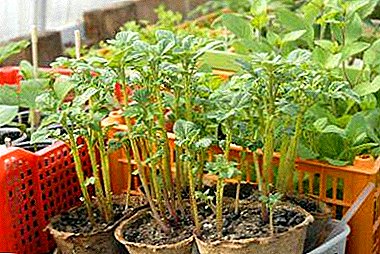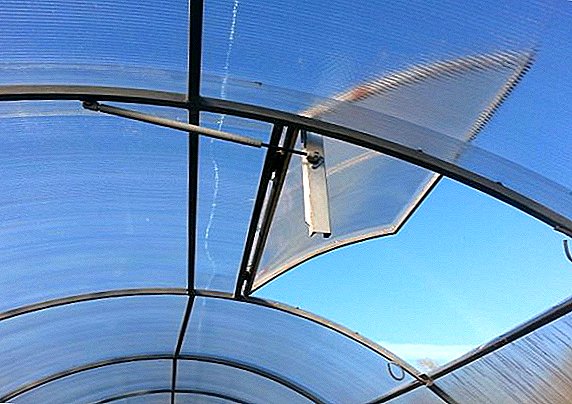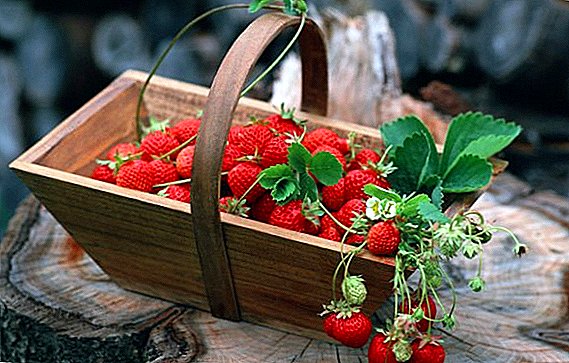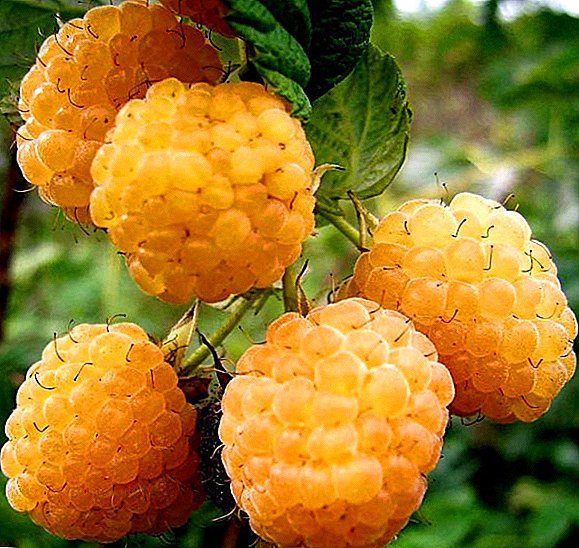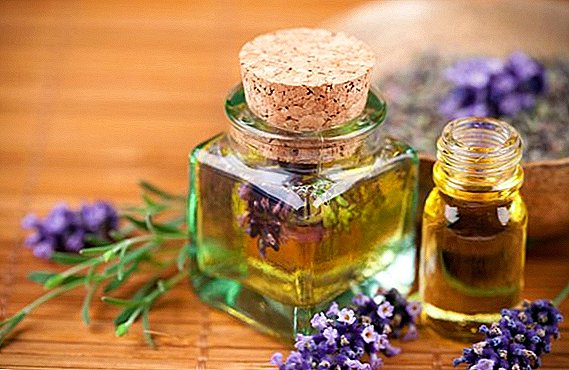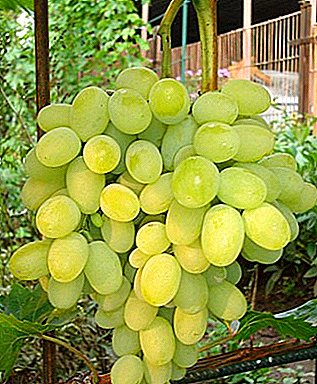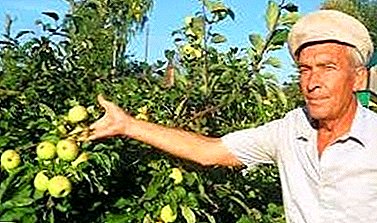
Growing an apple tree is a laborious process that requires responsibility and a desire to invest in your favorite business. But, the result is worth it!
Today we will talk about the different ways of growing apple varieties of white filling. Various subtleties, features, stages of technology will help grow a healthy, strong tree and get a bountiful harvest.
Landing
The future growth, development of a young tree will depend on the correct planting.
When and how to plant?
Decide on a landing method. The young sapling is more often used, but some gardeners grow apple trees from seed. It takes more time, patience, adherence to a certain technology. The quality of the fruit may differ from the varietal.
Seed
Unlike other fruit crops (tomatoes, cucumbers), seeds of apple without prior preparation sprout with great difficulty.
- At first, fresh, ripe kernels are thoroughly washed with water, clearing from the substance that prevents germination. For three days soaked in a saucer with cool water, which is regularly changed, add growth stimulator ("Epin-extra" for example).
- Then carry out the stratification procedure (hardening). The container is filled with wet sand (or sawdust), seeds are immersed in it, cleaned in a refrigerator, cellar or cellar. Within 1.5-2 months they should be stored at a temperature of 1-5 degrees.
- As soon as the seeds are full, they are transplanted into separate containers.
There are other ways.

- From ancient times preserved easier way, used by monks while working in a garden on the territory of the Valaam Monastery. At the end of the summer, the grains were washed with water and placed immediately in open ground.
Before the onset of cold weather, the seeds had time to swell, take root, hardened in winter. Closer to April, young sprouts appeared in May.
- You can put the grains in peat pots filled with a nutrient substrate, immerse them in wooden boxes and remove them in the fall under the snow. To protect against rodents, boxes are lined with fir branches.. In spring, seedlings will appear and seedlings can be transplanted to a permanent place.
Seedling
- Sapling planted in early May. The snow is already completely gone, the night frosts will end, the air will begin to warm the earth. If the soil is still frozen, set aside the time of planting for 1-2 weeks.
- A deep, wide hole (approximately 45 to 45 cm) is dug out for planting so that the roots can be freely accommodated in it. At the bottom is an earthen mound, fertilizers are applied (peat, ash, humus). Place the seedling vertically in the center of the pit, straighten the roots and cover with soil.
Useful tips:
- It is better to put the top layer of soil in one direction, the bottom in another when digging a hole. Fall asleep in the appropriate order.
- Pay attention to the root neck. It should be above the top layer of the earth.
Technology
The technology of planting seeds and seedlings is completely different. There is a difference in what capacity, the soil for this is used.
For seed
 Planting begins after hardening, when the seeds proklyutsya.
Planting begins after hardening, when the seeds proklyutsya.
- Young sprouts transplanted into spacious containers (wooden box, tub, pot).
- Capacity filled with earth. It should be light, loose, well pass water, oxygen. It is better to take the land from the site where the future landing is planned. If the soil is clay, heavy, add sand and a little peat. It is recommended to make a drainage embankment and a hole at the bottom of the tank.
For seedling
Work with a sapling easier. It is planted immediately in open ground.
- Give away preference for an open, sunny landing area. In the shade trees grow well, but the quality of the harvest is significantly reduced. Do not plant an apple tree in the valley.
- Distance between by others garden trees and saplings must be not less than 4 meters.
- Trees grow well on fertile or moderately fertile soils. It should be light, loose, well pass water and oxygen. If the ground is clay and heavy, add some sand to it. Pay attention to the acidity. High acidity lime extinguish.
- It is important at what level the groundwater is located. If approaching too close to the landing site, make an additional earth mound on top.
When is the apple tree transplanted?

When planting trees in open ground, transplantation is carried out only if absolutely necessary.
When grown from seed regular transplanting requiredwhich is carried out in several stages.
- After stratification. The first stage of development of the young sprout.
- A year later, the young plant is recommended to be replanted into a more spacious and wide container, not to rush to a premature landing on the site. Root bend and take at right angles.
- At the third stage, the seedling is planted in the garden.
This process will contribute to early fruiting, otherwise apples may appear after 10-15 years.
Care
In order to grow a young sapling, have patience, properly care for the plant.
In the first stage of growth
The period when the grains are transplanted after hardening in separate containers.
First days
- Some gardeners advise maintaining greenhouse conditions for some time. The seed container is covered with a plastic film (or glass), which is removed only to air sprouts and moisten the soil.
- When the shoots are stretched to 1-2 cm in height, the film can be removed and gradually move the container to a well-lit, open place. First, the film is opened for an hour, 2-3 hours, a day and removed completely.
- Protect young leaves from the sun during the daytime. Create ambient lighting conditions. This is especially important if the pot is located next to the window facing south. Young leaves are still weak and can easily get sunburn.
Watering and fertilizing the soil
 At the first stages try to moisten the ground very carefully.
At the first stages try to moisten the ground very carefully.
You can not water the sprout from the top of the watering can or bottleso as not to hurt.
Moisturize the soil only around the sprout.
Feed in the first year of life can be several times. At the same time, it is not worthwhile to get involved in nitrogenous fertilizers, since they contribute to enhanced growth of green mass and weaken the plant before winter.
How to help the shoots?
Regularly water, feed, ventilate the room, protect from drafts and temperature drops in the room, and in the daytime from the rays of the scorching sun. In dry warm weather, you can take the plant to fresh air, so that it is ventilated and breathed oxygen.
The young shoot is still weak, so he reinforcement is required - garter to the peg.
Most often several seedlings are grown from seed. When they grow up a little, you can start culling of the diashells. For further growing leave only the strongest and strongest. Pay attention to the appearance of the plant.
If there are thorns on the trunk, and the shoots and leaves are short, it is better to get rid of such sprouts, since the fruits of such a tree will be small and sour.
First transplant

- For transplanting, a more spacious container is chosen so that the plant feels comfortable in it and there is a place for the development of the root system. The larger the pot, the greater the chance of forming a strong root stem.
- Take care of the transplant. Handle the plant with care to avoid damage.
- During transplantation, you can shorten the root system, but it is better to gently bend the root and bend it to the side.
For a young seedling
There comes the last crucial period before the seedling is planted in a permanent place. Now it is especially important to provide him with proper care for growth, strengthening the root system, the formation of crown.
Developing roots for nutrition
- Moisten the ground regularly, but beware of excess moisturewhich can harm and even cause the appearance of rot.
- Feed phosphate and potash fertilizers. Keep the plant in a well-lit room.
- Keep away from drafts and temperature drops.
- Carefully loosen the top layer of earth. This will help better outflow of moisture and breathing.
Crown formation
To give the crown the correct position, you can use trimming and tying.
Crop.

- Unbranched young seedling pruned at height 80-90 cm. This will begin to stimulate the growth of lateral shoots and in the future you can proceed to the formation of the crown.
- If the branching began, remove shoots at the level 50-70 cm. Among the uplifting cut those that form an acute angle with the trunk. The third kidney is shortened to those that form a wide angle.
The conductor (the upper part of the trunk) is also cut. Compared to side shoots, it must remain in the lead (higher by 15-20 cm.).
Tying up
- The branches of a young apple tree are tied to the lower branches, a peg or stem, giving them a horizontal position. You can put a piece of cardboardso that the rope does not crash and injure the branches. Gradually, they will begin to consolidate in the new position.
When tying up, do not rush to reject the branches of young saplings, as growth slows down, they will become skeletal. They replace the seedling will give other shoots. Tie up only long and strong branches.. Striving to give the branch a strictly horizontal position is not worth it so as not to break off. It is enough to make a slope of thirty degrees from the vertical position.
- You can make additional support by tying to a peg driven into the ground.
Location on
 After planting, it is important to give the young apple the right care so that it can settle well, begin to grow and develop.
After planting, it is important to give the young apple the right care so that it can settle well, begin to grow and develop.
From birth to the first fruits
The first years of growth is a particularly important stage. Follow basic care guidelines.
- Watering should be moderate and regular.. In order to understand where the roots are located, you can draw a circle around the tree or drive in small pegs. Next make special grooves for the outflow of water.
- Take care of the soil. Weed, removing the roots and weeds. Loosen the ground. In dry weather, this will help to better pass water to the roots, and in rainy weather - oxygen.
- In the first year, fertilizer is applied only during planting.. In subsequent years, you can fertilize potash, phosphate fertilizers. Nitrous while not recommended.
- For reliable support you can tie up the seedling to the peg. This will promote proper growth, protect from strong winds. It should be tied to either three pegs, arranged in a triangle or two. In this case, the pegs are placed on the right and left side of the trunk.
- Every spring pruning. Delete all old, unnecessary (unnecessary) branches. During the first years, pruning is important for the formation of the correct crown and will be the prevention of disease. When forming the crown, pay attention to how the branches are located.
- It will not be superfluous to make spring treatment with insecticides. for pest prevention.
- To help survive the first winters, make mulching before the first cold weather. As mulch fit: sawdust, humus, hay, wood chips.
How to get a good harvest?

In order for the tree to start bearing fruit, you need to pollinate it. White filling refers to the summer variety.
When choosing a pollinator, preference should be given to those varieties that bloom and yield about the same time as the White bulk: Grushovka Moskovskaya, Mantet, Anis Sverdlovskiy other.
In order for the apple tree to begin to bear fruit well and not “suffer” from an oversupply of apples, it is necessary to properly thin out the rudiments of the fruit. In each bunch several apples are formed. At this time, you need to remove one from the center of each beam.. If this is not done, the quality of the harvest may decline, and the next year the tree will rest and not bring much fruit.
If the branches are heavily overloaded with fruits and begin to bend under them, you need to make additional support with the help of special pegs driven into the ground. This support is often made for mature trees, but it may also be necessary for young ones.
Properly care for the tree
Continue to take care of the tree: water, fertilize the soil, protect from diseases and pests, spend spring pruning.
- Regular spring pruning will help rejuvenate the apple tree. It is proved that even those trees that are beginning to lose their decorative qualities and bear fruit come to life again after spring pruning.
- White filling does not tolerate the winter. But, carrying out mulching before the onset of cold weather will not bring harm. To protect the bark from rodents, you can whitewash the trunk of the apple tree or impose spruce.
- Fertilization for an adult tree is recommended to be carried out in several stages.
- The first feeding comes at the end of April. Under the tree make five hundred grams of urea or six buckets of humus. The second time is fertilized with liquid humus at the beginning of flowering. The third is held during the formation of the fruit.
In 200 liters of water dilute 1 kg of nitrosafat and 20 grams of dry sodium humate. Under one tree poured 30 liters of solution. Last - after harvesting. Fertilize with potassium sulfate and superphosphate (350 grams). In dry weather, fertilizers are diluted in water.
Growing apple trees is a long and laborious process. No matter which way you choose - plant a seed or purchase a ready seedling. The most important thing is to give a lot of energy, time, devoting oneself to the care and care of a young plant. Only because of this, it is possible to grow a healthy, strong apple tree that will produce a bountiful harvest annually.


